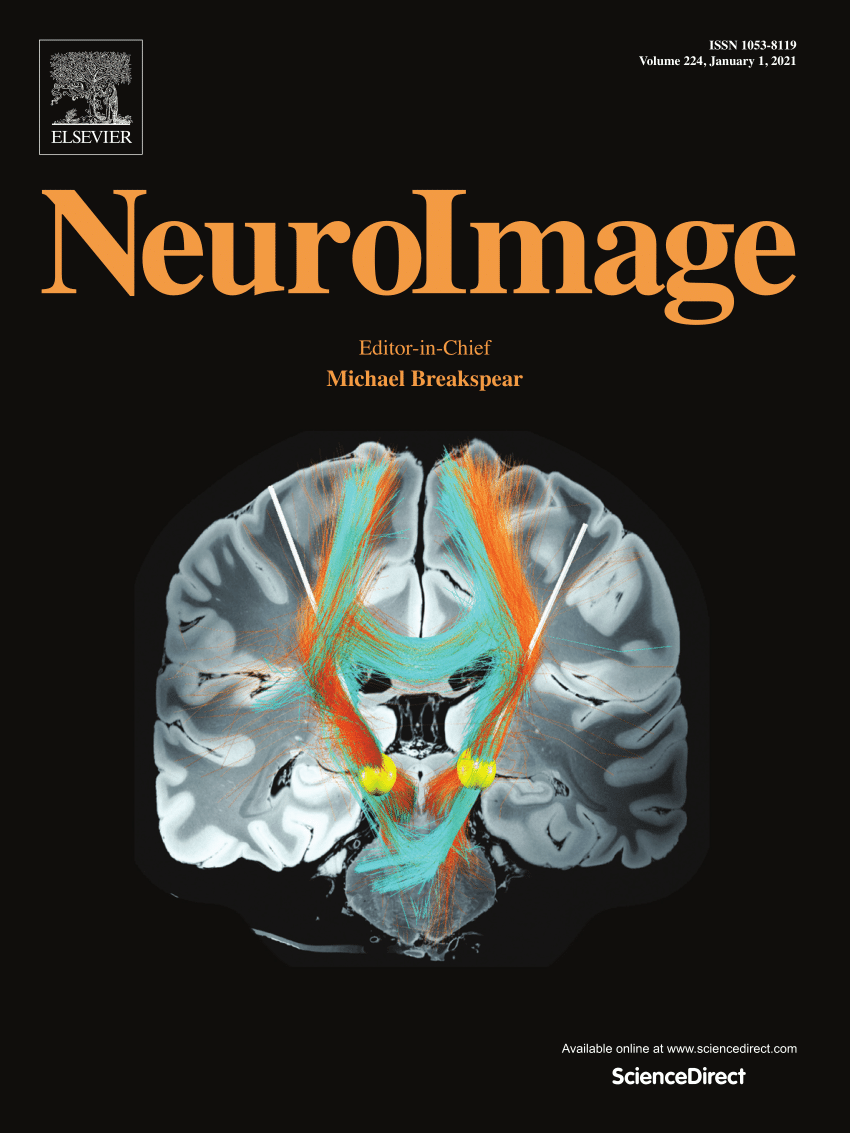Theta oscillations between the ventromedial prefrontal cortex and amygdala support dynamic representations of threat and safety
IF 4.7
2区 医学
Q1 NEUROIMAGING
引用次数: 0
Abstract
The amygdala exhibits distinct different activity patterns to threat and safety stimuli. Animal studies have demonstrated that the fear (i.e., threat) and extinction (i.e., safety) memory are encoded by the amygdala and its interaction with the ventromedial prefrontal cortex (vmPFC). Recent studies in both animals and humans suggest that the inter-regional interaction between amygdala and vmPFC can be supported by theta oscillations during fear processing. However, the mechanism by which the human vmPFC-amygdala pathway dynamically supports neural representations of the same stimulus remains elusive, as it alternatively reflects threat and safety situations. To investigate this phenomenon, we conducted intracranial EEG recordings in drug-resistant epilepsy patients (n = 8) with implanted depth electrodes who performed a fear conditioning and extinction task. This task was designed with a fixed structure whereby specific CS+ stimulus could be either safe (never paired with US) or threatening (possibly paired with US) based on an implicit rule during fear acquisition. Our findings showed that the stimulus embodying potential threat information was accompanied by increased theta activities in amygdala during both fear acquisition and early extinction. Furthermore, the learning of safety information was associated with enhanced theta-related direction from the vmPFC to the amygdala. This study provided directly electrophysiological evidence supporting the dynamic oscillatory modulation of threat and safety representations in the human amygdala-vmPFC circuit, and suggests that amygdala safety processing depends on theta inputs from the vmPFC in both fear acquisition and extinction.
腹内侧前额叶皮层和杏仁核之间的θ波振荡支持威胁和安全的动态表征:动态威胁表征的θ波调制。
杏仁核对威胁和安全刺激表现出截然不同的活动模式。动物研究表明,恐惧(即威胁)和消退(即安全)记忆是由杏仁核及其与腹内侧前额叶皮层(vmPFC)的相互作用编码的。最近对动物和人类的研究表明,在恐惧处理过程中,杏仁核和腹外侧前额叶皮层之间的区域间相互作用可以得到θ振荡的支持。然而,人类的杏仁核-大脑前区通路动态支持同一刺激的神经表征的机制仍然难以捉摸,因为它交替反映了威胁和安全的情况。为了研究这一现象,我们对植入深度电极的耐药性癫痫患者(n = 8)进行了颅内脑电图记录,这些患者执行了一项恐惧条件反射和消退任务。这项任务设计了一个固定的结构,根据恐惧获得过程中的内隐规则,特定的 CS+ 刺激既可以是安全的(从不与 US 配对),也可以是具有威胁性的(可能与 US 配对)。我们的研究结果表明,在恐惧获得和早期消退过程中,体现潜在威胁信息的刺激伴随着杏仁核θ活动的增加。此外,安全信息的学习与从大脑前交叉嵴到杏仁核的θ相关方向的增强有关。这项研究直接提供了电生理学证据,支持人类杏仁核-vmPFC回路中威胁和安全表征的动态振荡调节,并表明杏仁核安全处理在恐惧获得和消退过程中都依赖于来自vmPFC的θ输入。
本文章由计算机程序翻译,如有差异,请以英文原文为准。
求助全文
约1分钟内获得全文
求助全文
来源期刊

NeuroImage
医学-核医学
CiteScore
11.30
自引率
10.50%
发文量
809
审稿时长
63 days
期刊介绍:
NeuroImage, a Journal of Brain Function provides a vehicle for communicating important advances in acquiring, analyzing, and modelling neuroimaging data and in applying these techniques to the study of structure-function and brain-behavior relationships. Though the emphasis is on the macroscopic level of human brain organization, meso-and microscopic neuroimaging across all species will be considered if informative for understanding the aforementioned relationships.
 求助内容:
求助内容: 应助结果提醒方式:
应助结果提醒方式:


